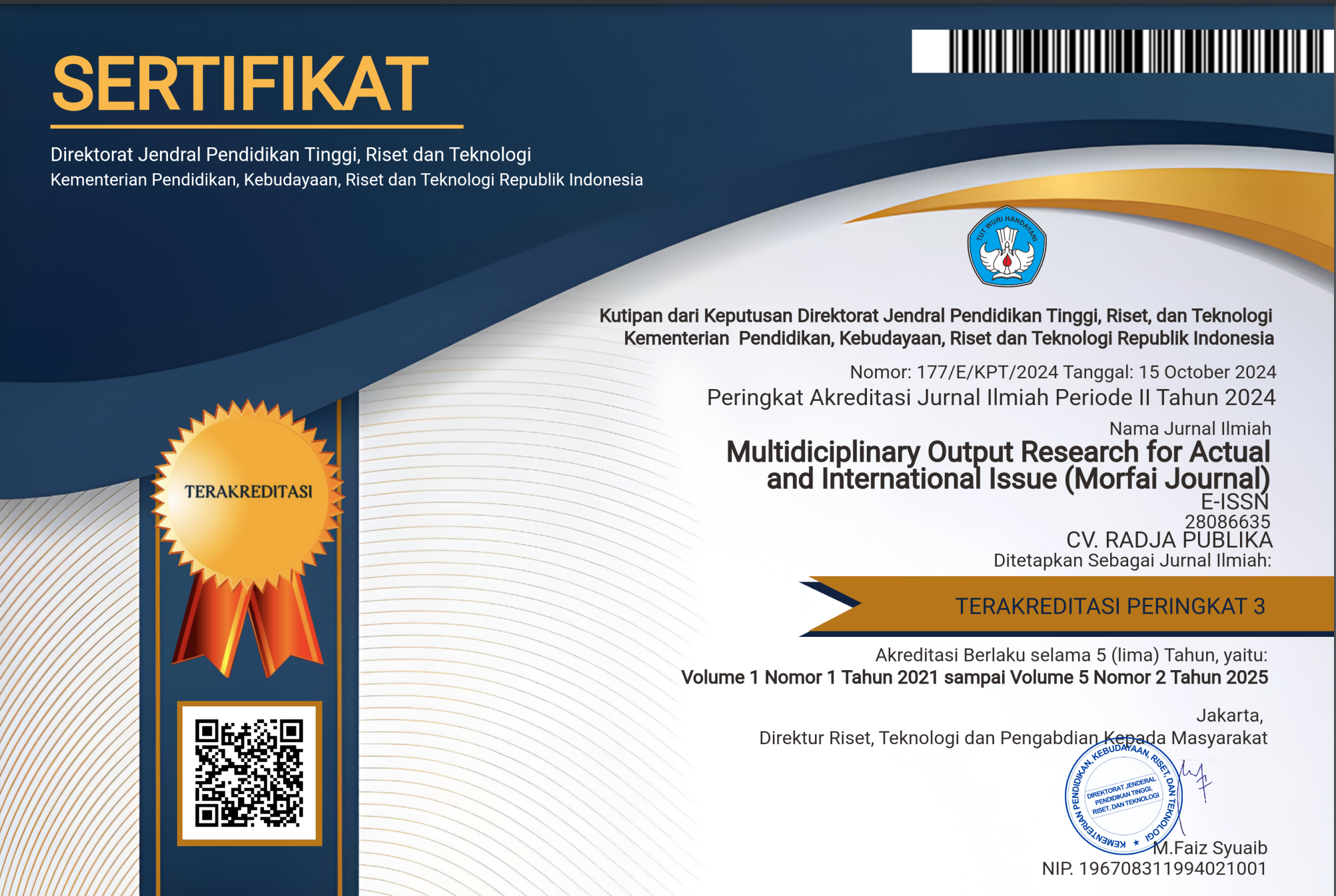TRANSPARENCY IN THE POLITICAL DECISION-MAKING PROCESS: ITS IMPACT ON PEOPLE'S WELFARE
Main Article Content
Gunawan Widjaja
This article highlights the importance of transparency as an essential component of a democratic and accountable political system. By increasing openness in decision-making processes, citizens gain better access to information necessary for active participation in democracy. Transparency helps reduce corruption and ensures that policies are implemented more fairly and in line with public needs. study The claims that with transparency, improvements in people's welfare can be achieved as policies are made based on clear information and strong participation from citizens. results The final show a positive relationship between transparency in political decision-making and improved quality of life.
Anderson, J. (2023). Transparency and Technology: The Role of AI in Enhancing Government Accountability. Journal of Technology in Government,27 (4), 341-362. https://doi.org/10.9087/jtg.2023.274341
Brown, C. (2023). Welfare Narratives and Political Discourse. Political Science Quarterly, (7), 450-475. https://doi.org/10.3456/psq.2023.345652
Clark, K. (2021). Cost Optimisation Strategies in Cloud. IEEE Transactions on Cloud Computing,9 (3), 234-246. https://doi.org/10.1109/TCC.2020.2984765
Davis, M. (2019). Land Tenure and Economic Growth. Economic Development Quarterly,33 , 78-95. https://doi.org/10.1177/0891242419831101
Fung, A. (2013). Full Disclosure: The Perils and Promise of Transparency. Cambridge University Press.
Gonzalez, M. (2022). Welfare State Dynamics and Political Parties. Journal of Social Welfare Studies,29 (2), 95-115. https://doi.org/10.5678/jsws.2022.5678
Gough, D., Thomas, J., & Oliver, S. (2012). An Introduction to Systematic Reviews. SAGE Publications Ltd.
Grant, M. J., & Booth, A. (2009). A Typology of Reviews: An Analysis of 14 Review Types and Associated Methodologies. Health Information and Libraries Journal, 26(2), 91–108.
Grigorescu, A. (2003). Transparency of Intergovernmental Organisations: The Roles of Member States, International Bureaucracies, and Nongovernmental Organisations. International Studies Quarterly, 47(4), 643–667.
Hollyer, J. R., Rosendorff, B. P., & Vreeland, J. R. (2011). Democracy and Transparency. Journal of Politics, 73(4), 1191–1205.
Hughes, L. (2023). Transparency and Social Media: Navigating Risks and Opportunities in Public Communication. Social Media & Society,9 (3), 203-227. https://doi.org/10.3210/sms.2023.0903203
Johnson, E. (2020). Political Realignment and Social Welfare. Social Policy Review,32 (4), 210-230. https://doi.org/10.2345/spr.2020.2345
Martinez, C. (2023). Using Blockchain for Public Financial Transparency. International Journal of Financial Innovation,21 (3), 287-310. https://doi.org/10.1123/ijf.2023.2103287
Martinez, L. (2023). Innovations in Digital Transparency and its Impact on Government Governance. Governance Review,32 (2), 199-219. https://doi.org/10.5432/gr.2023.320299
Nakamura, H., & Kim, S.-J. (2023). Evaluating Transparency Programmes in Primary Education. Journal of Educational Evaluation,29 (4), 311-332. https://doi.org/10.7890/jee.2023.2904311
Novak, P. (2023). The Impact of Transparency on Anti-Corruption Efforts: An Empirical Study in Eastern Europe. European Journal of Political Research,62 (3), 309-333. https://doi.org/10.1234/ejpr.2023.6203309
O'Connor, D. (2022). Benefits of Blockchain for VAT Systems. Tax Law Review,74 (1), 357-375. https://doi.org/10.3389/taxlawrev.2022.011
OECD. (2019). Digital Innovation: Seizing Policy Opportunities. OECD Publishing.
Patel, A. (2023). The Evolution of Welfare Policies and Political Partisanship. International Social Policy Review,33 (3), 210-230. https://doi.org/10.7890/ispr.2023.7890
Pope, J. (2022). The Impact of Transparency on Governance. https://www.transparency.org
Roberts, M., & Clarke, J. (2022). Digitalisation in the Automotive Industry: Enhancing Sustainability. Transportation Research Part D: Transport and Environment,101 , 103089. https://doi.org/10.1016/j.trd.2021.103089
Rossi, A. (2023). Local Government Transparency: An International Comparison. International Journal of Local Government Studies,11 (2), 183-206. https://doi.org/10.1234/ijlg.2023.1102183
Smith, J. (2023). Recent Advances in Land Rights. Journal of Legal Studies,58 (2), 163-182. https://doi.org/10.1016/j.jls.2023.00123
Tan, M. L., & Chandra, D. (2023). E-Government Implementation and its Impact on Transparency in Southeast Asia. Asian Journal of Public Administration,18 (2), 145-167. https://doi.org/10.5678/ajpa.2023.1802145
Torraco, R. J. (2005). Writing Integrative Literature Reviews: Guidelines and Examples. Human Resource Development Review, 4(3), 356–367.
Transparency International. (2023). Corruption Perceptions Index.
Walker, S. (2023). Measuring the Effectiveness of Transparency in Public Services. Journal of Public Management,30 (1), 65-88. https://doi.org/10.2345/jpm.2023.3001065
Wang, H. (2021). Comparative Analysis of Land Rights in Asia. Asian Journal of Law,34 , 201-220. https://doi.org/10.1080/10288860.2021.44
Wilson, E. (2021). Digital Transformation in Land Administration. Comput. Law Journal,22 , 89-97. https://doi.org/10.1002/clj.981131









